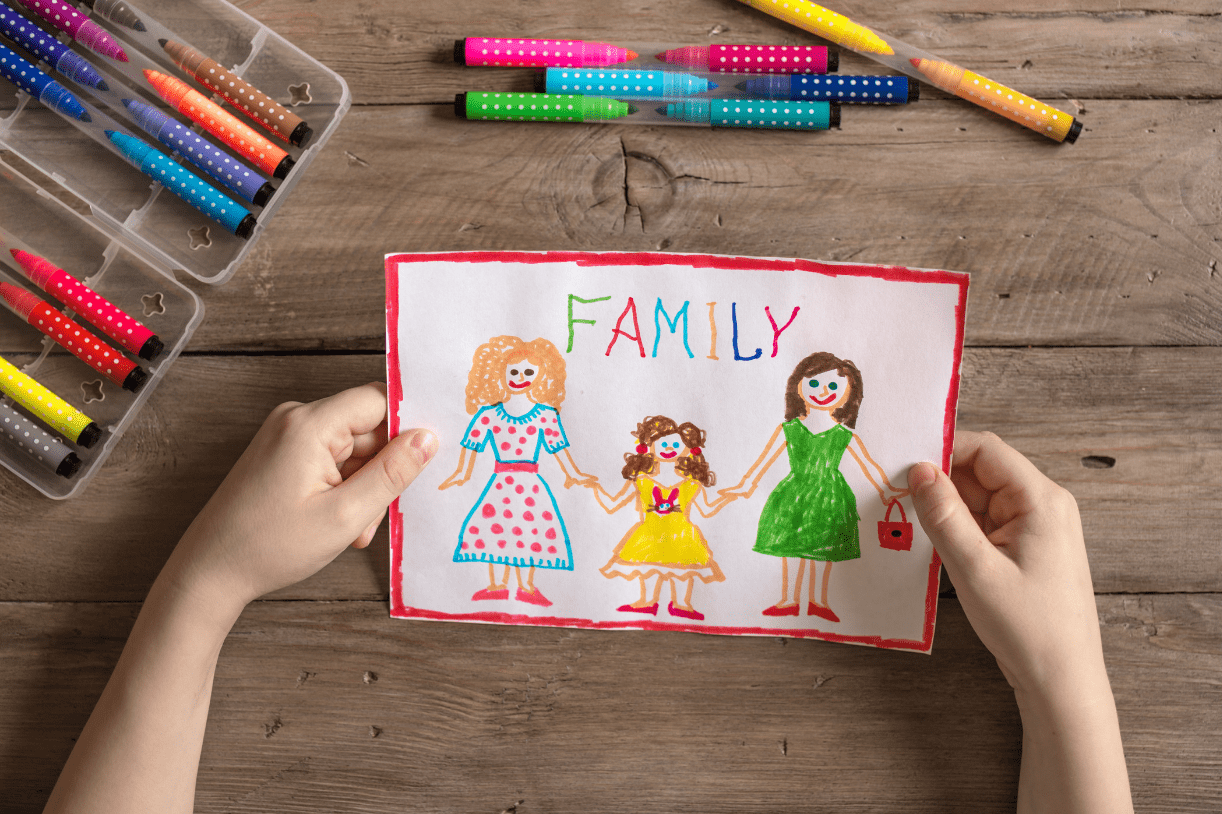
How to explain sexual orientation and gender identity to kids
Happy Pride Month! Even though Pride Month is a great time to celebrate and advocate for the LGBTQIA+ community, we should be supporting them/each other all year round. And the same goes for talking to your kids about sexual orientation and gender identity! Pride Month might be a good way to introduce the topic, but our kids should feel safe to talk about it whenever they have questions or want to express themselves. However, there’s one small potential problem...most of us parents didn’t have these conversations growing up, so how do we go about it?! Don’t worry, it’s not as daunting as you might think! And we’ve got some useful tips below to help guide you through it.
1. Educate yourself
Whatever your own sexual orientation and gender identity, and whatever your child’s (or whatever you assume it may be), these topics are important to talk about regardless. As our child goes through life they’re going to come into contact with a wide variety of people, therefore it’s crucial to educate them (and ourselves!) so that we don’t breed ignorance.
Language used by the LGBTQIA+ community has been evolving over recent years and there is a broad range of labels that people may (or may not) use to identify themselves. These seemingly sudden changes in language can maybe feel a bit confusing or difficult to keep up with. But I promise, the more you talk about it the more naturally these terms will come to you and you’ll feel more comfortable knowing which terms are appropriate and which aren’t. And of course when referring to an individual person always check and be respectful of how they choose to identify themselves.
Stonewall have a lot of great resources, including a glossary and an introductory guide to supporting LGBTQIA+ children and young people, so we highly recommend taking some time to browse through these and other resources that we’ll mention at the end of this article.
And remember - if you don’t know the answer to your child’s question, that’s ok! It’s better to say to them that you don’t know but it’s a good question and you’ll try to find an answer for them.

2. It doesn’t have to be just one big talk!
See? I told you it’s not as daunting as you may think! Conversations about gender and sexuality will change over time, depending on your kid’s age and experiences. The types of questions your 5 year old will ask you will be hugely different from the topics your 15 year old will want to discuss. Therefore, you’re going to have a lot of little conversations over time. For example, your 5 year old might be curious about “the differences between boys and girls” while your 15 year old may be wondering about the differences between sexual and romantic attraction.
3. Let them guide the conversation
As a follow-up from the previous point, kids will have different questions depending on their age. So let their questions guide the conversation, that way you don’t have to overthink about whether it’s age appropriate or not and it gives you the opportunity to find out what they already know. It also means you’re able to correct any misconceptions they may have as soon as possible. A good way to let them guide the conversation is first by asking them if they want to talk about it and then if so by asking them open-ended questions, such as how do they feel about the topic or asking them why it’s on their mind.
Always reiterate to your kids that talking to you is a “safe space” and that they can confide in you. These topics can potentially be very personal for your child, and they may still be confused trying to figure out their own identity, so it’s important to respect their vulnerability and privacy, and never gossip about them to other family members or friends.

Tip: If your child doesn’t feel comfortable expressing themselves verbally, you could always communicate in writing or drawings!
4. Celebrate diversity and have compassion for others
Diversity is beautiful and worth celebrating. Every individual is inherently worthy, no matter their sexuality, gender expression, race, ethnicity, etc. It’s important for our kids to see us talk positively about other groups of people and to try our best in diversifying the type of content and media our children are exposed to.
Here is a great children’s story written and read by Karamo Brown called “I am perfectly designed” that you can listen to or read with your child:
It’s also important to note that we don’t always give much thought to issues that don’t impact us personally. Therefore, talking about sexual orientation and gender identity is also a good opportunity to talk about compassion! It’s great if your child is comfortable in their own skin but you can remind them that not everyone feels this way (or may have trouble finding people who accept them for who they are). Ask your kid to consider what they would do in scenarios where a classmate is being bullied, and give them guidance on how they could support someone else in a respectful and safe way.
5. Model positive behaviours and break stereotypes
Sometimes actions speak louder than words! Therefore, it’s important for us to model inclusive behaviours to our children in day to day life. For example, if a homophobic joke is told in our presence or someone is being made fun of for how they choose to dress and express themselves, then it’s essential that we speak up and set a positive example for our child.
Gender roles and stereotypes are pushed onto us at a young age. They’re so ingrained that most of us don’t even give it a second thought - but maybe we should start questioning things more. Why is pink for girls and blue for boys? And “boys will be boys” but girls are expected to be obedient and mature? (And as you can see from these two examples even, non-binary people are rarely even acknowledged!) Not only are these beliefs limiting, they can also be problematic. Encourage your child’s interests and let them be true to themself! Let your child feel empowered to make their own choices when it comes to what toys they’d like to play with or what clothes they want to wear (of course you still need to check if it's weather-appropriate though!). Support your child in creating a positive sense of self and let them know they can pursue their passions regardless of whether others deem them as “masculine” or “feminine”.

Every conversation will be different, but just remember to always be respectful, honest, and open-minded, and it’ll be ok! And most importantly, remind your kids that you will love them unconditionally, no matter how they identify. We hope that these tips and the resources below are helpful, and if you have anything else you’d like to add or comment on we’d love to hear from you on Facebook or Instagram.
Resources:
“An introduction to supporting LGBTQIA+LGBT children and young people” (source: Stonewall)
The Proud Trust: A charity that helps LGBTQIA+ young people empower themselves
FAQs from parents about sexuality and gender (source: Beyond Blue)
Do you need a babysitter, nanny or childminder to help look after your kids? Find childcare providers in your local area below:



